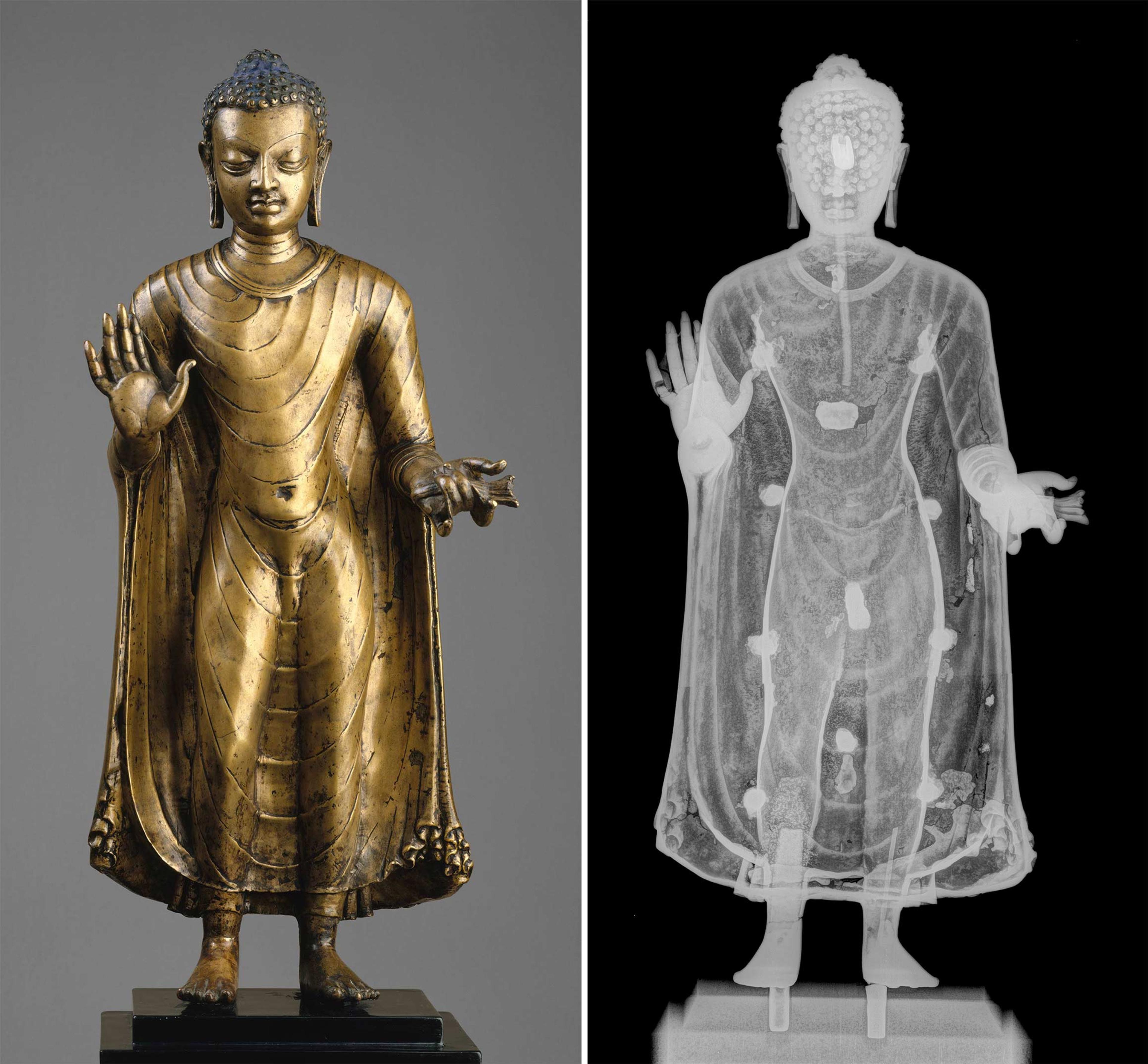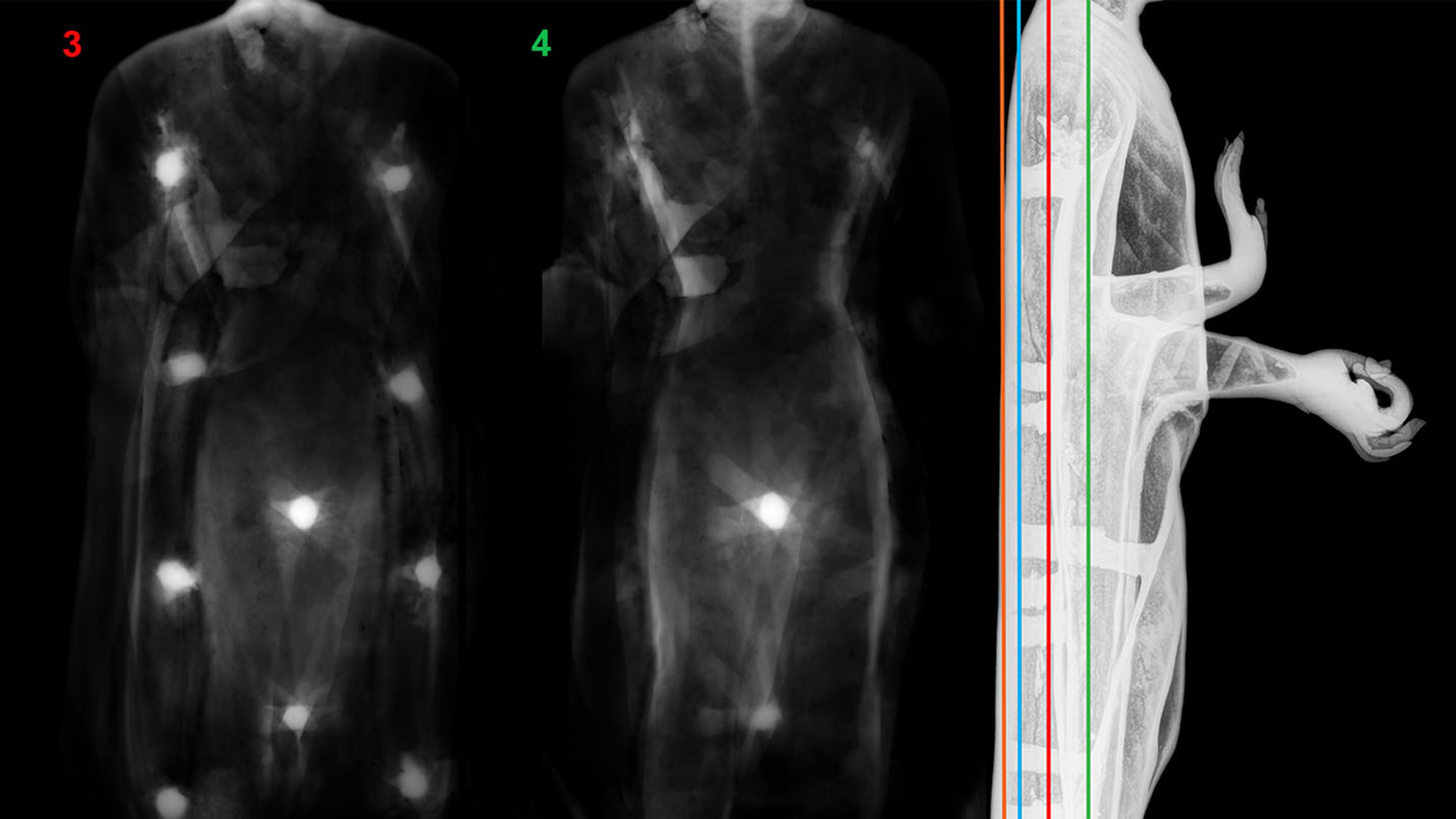Researchers in the Departments of Objects Conservation and Scientific Research carried out a technical study of Gupta-style bronze Buddha images from India and South Asia, among them a late sixth- to early seventh-century figure in the Museum's collection. This study included an investigation of the statues' internal structure using conventional and 3-D radiography.
The 2-D X-ray

Left: Buddha, late 6th–early 7th century. India (probably Bihar), Gupta period. Bronze, 18 1/2 x 6 1/8 x 5 5/8 in. (47 x 15.6 x 14.3 cm). The Metropolitan Museum of Art, New York, Purchase, Florance Waterbury Bequest, 1969 (69.222). Right: Computed radiograph of the statue, frontal view
The frontal radiographs revealed an unusual feature (above right): a series of white circles, function initially unknown. Based on their observation of various internal and external features, the researchers realized that these circles must reflect the presence of internal gates that transect the core of each hollow-cast figure.
Most figural metal statuary is cast vertically, head down, with the molten metal poured into the casting form at the feet. In the case of the Gupta-style images, however, the porosity on the back of the statues indicated that they had been cast horizontally, face down.
The researchers therefore concluded that the internal gates served to channel molten metal from the back to the front of the figure, assuring that the finished statue would have a minimum of flaws on the front.
Because conventional radiographs compress a three-dimensional form into a two-dimensional rendering, the exact location of the gates could not be established using this method. So the research team employed a volumetric imaging technique, developed by Digitome Inc., that enabled them to see in three dimensions the gates inside the Gupta-period bronze image of the Buddha at The Met.
The 3-D X-ray
With the help of this innovative 3-D X-ray technology, the researchers were able to determine that the internal gates do not extend all the way to the front of the body, but terminate in the recessed surfaces of the robe. This finding supports their hypothesis that the function of the gates was to direct the molten bronze specifically into the draperies between the legs and adjacent to the body, areas that would not have been successfully cast if the metal had reached there by a less direct path.
The video above shows the consecutive viewing levels calculated from a volumetric X-ray examination. On the left, you will see the viewing levels as they scroll from the back to the front of the figure. On the right, you will see a conventional 2-D profile radiograph. The colored lines on this image plot four significant viewing levels as they appear on the left:
Viewing level 1 (orange): Two cast-in repairs are visible, located near the center on the figure's back. Several internal gates on the lower half of the robe are beginning to appear.
Viewing level 2 (blue): All ten internal gates are visible, as well as an additional cast-in repair on the back of the neck.
Viewing level 3 (red): The ten internal gates are still visible, as well as a surviving section of an armature in the upper torso. This level corresponds to the surface of the recessed draperies on each side of the body.
Viewing level 4 (green): Only the two gates in the recessed drapery between the legs are visible.
To learn more about the unique technology developed by North Indian metalworkers to cast devotional images of the Buddha, see Arts of Asia 49, no. 2 (March–April 2019), pp. 131–143 (PDF).
